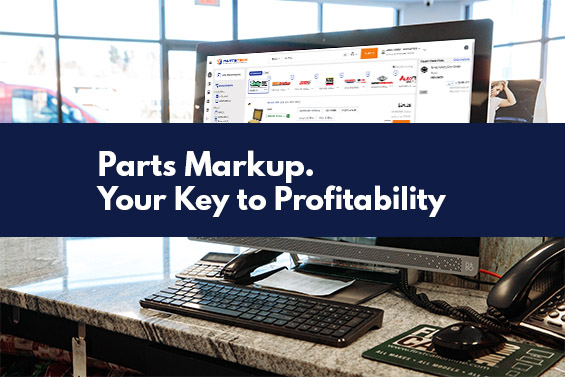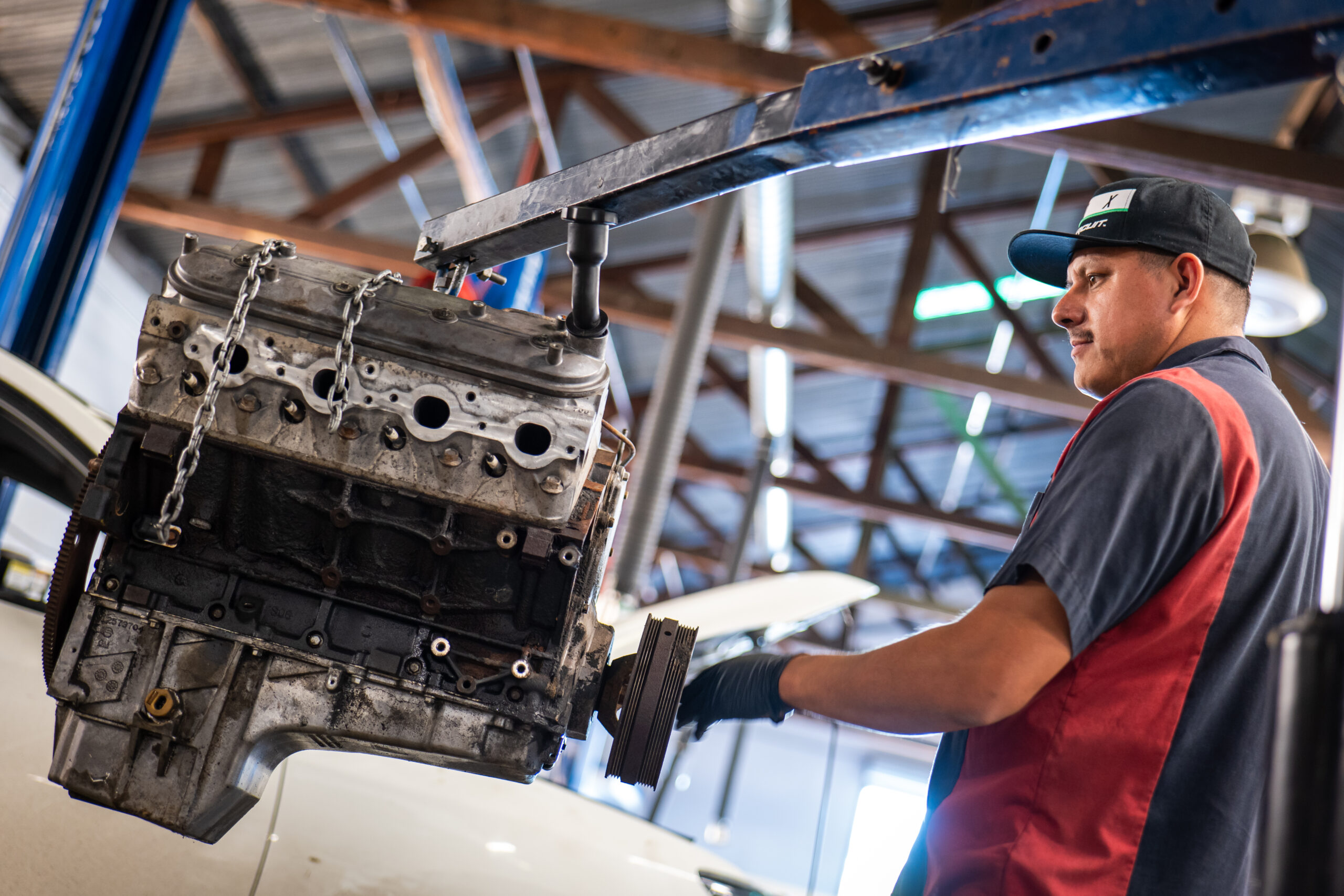
One of the most critical factors in maximizing profit for your repair shop – and saving time for service advisors – is determining your parts markup. By establishing a consistent parts markup strategy, you can save time pricing out jobs and focus your time on maximizing your labor and delivering a great customer experience. A well-defined parts markup matrix determines how much your shop charges for parts and is essential to ensure that you’re making a reasonable gross profit on the parts you’re selling. In this blog post, we’ll step through how to evaluate your parts markup on your path to achieving your target gross profit percentage.
First, let’s start with some important terms you need to know:
Markup Percentage: The markup percentage is the amount by which the cost of the part is increased to arrive at the selling price. For example, if a part costs $50 and you apply a markup percentage of 100%, the selling price will be $100 (your price is double the cost). If you mark that same part up 50%, the price will be $75. So, how much gross profit is that?
Gross Profit: Gross profit (GP) is the difference between the selling price and the cost of the part. From the previous example, if a part costs $50 and you sell it for $100, the gross profit is $50. Your gross profit percentage (GP %) is 50% ($50 divided by $100). Also from our example, if you mark up that part to $75, your gross profit will be $25 and your GP % will be 33.3%.
There is a wide variety of advice out there about how much to markup parts. Some experts suggest trying to maintain a 50-55% gross profit on parts, while some suggest keeping markups much lower and increasing labor rates. Many customers will not be sensitive to a large markup on a lower-cost part. Marking up a $10 part to $20 is totally reasonable and unlikely to sound an alarm bell with a customer. But, marking up a $250 part to $500 is likely to sound the alarm. Therefore, it’s important to determine your markup percentages based on your cost ranges and to evaluate the right balance between markup and labor rates.
Building a parts markup matrix will save you and your service advisors a lot of time putting together estimates. Now that you understand these essential terms, let’s dive into the steps required to build a parts markup matrix.
1. Determine the Cost of the Part
The first step in building a parts markup matrix is to determine the cost of the part. This cost includes the price of the part, any shipping costs, and any applicable taxes. Make sure you’re accurately tracking the cost of parts, so you’re not undercharging for them.
2. Determine the Markup Percentage
The markup percentage you apply to the part will depend on a variety of factors, such as the part’s cost, how competitive the market is, and what sort of reputation your shop has in the market. Generally, the higher the cost of the part, the lower the markup percentage you should apply.
3. Calculate the Selling Price
Once you’ve determined the cost of the part and the markup percentage, you can calculate the selling price. To calculate the selling price, you’ll need to multiply the cost of the part by the markup percentage and then add the result to the cost of the part. As noted above, if a part costs $50 and you apply a markup percentage of 75%, the selling price will be $87.50.
4. Monitor Your Gross Profit
After you’ve established your parts markup percentage, you’ll need to track your gross profit to ensure that you’re making a reasonable profit on the parts you’re selling. If you find that your gross profit is too low, you may need to adjust your markup percentage or look for ways to reduce your costs. In the example above, your gross profit percentage is 50%
5. Find a Balance Between Your Parts Markup and Labor Rates
How much you charge for labor, and how effectively you utilize your labor, are critical to determining your shop’s efficiency and how much profit you can make (we’ll cover this topic in a separate blog post). It’s also important to think about the relationship between your labor rates and your parts markup. Ideally, you don’t want to sacrifice on both fronts, but you need to be careful not to add too much markup if you’re going to charge a premium for labor. If you’re going to err on the low end of markup for a job, you can set a labor rate to capture some of the margin you’re giving up. Conversely, if you’re significantly marking up your parts for a job, you need to be careful that you don’t overcharge for labor. Ultimately, other factors, such as how much you specialize for a particular repair type and how competitive your market is, will influence your parts markup and labor rates.
6. Use Software to Manage Your Parts Markup
If you’re using a shop management system (SMS), you might have a parts markup calculator or matrix built into your system. PartsTech, which aggregates your parts lookup and ordering across all of your suppliers, also lets you build and manage a parts markup matrix, called Retail Pricing. It’s customizable enough to allow you to mark up parts based on your costs (or cost range) and to even build part-specific markup calculations. Setting up a matrix will save you time and ensure you are achieving your gross profit targets.
In conclusion, your shop generates revenue in two key ways: charging for parts and labor. Determining your parts markup by price band or by part type and maintaining focus on a target gross profit percentage are critical elements to maximizing your shop’s profitability. Developing a parts markup strategy and managing it with an established parts markup matrix will save you time and make you more money.



